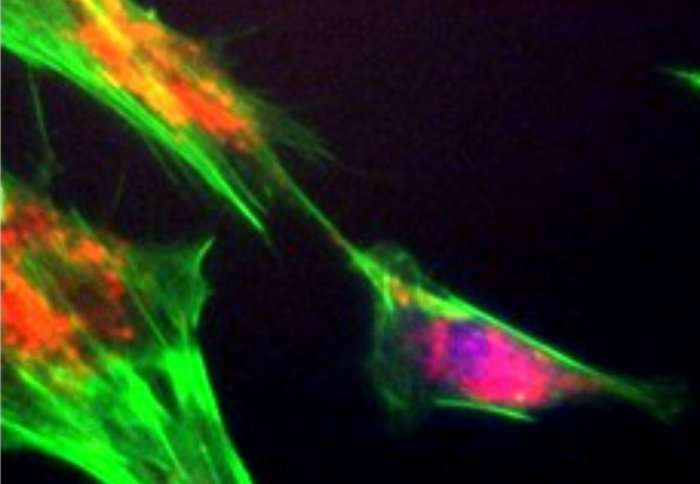Stem cells could offer hope for patients with lung damage from COPD and asthma

Early stage trials have shown promise for a cell-based therapy for treating lung tissue damaged by respiratory diseases.
In a collaboration between Imperial College London and Hong Kong University (HKU), scientists have shown that the stem cells can reduce some of the damage seen in human lung cells exposed to cigarette smoke in the lab, as well as reducing similar effects in the lungs of mice.
Further trials will be needed but according to the researchers, the findings could pave the way for a cell-based therapy for patients with chronic lung diseases like COPD and asthma.
COPD (Chronic obstructive pulmonary disease) is a severe respiratory condition largely linked with cigarette smoking. In patients with the condition, the gradual stiffening of tissue and loss of fine structure leads to a drop in the overall volume of the lung, making it increasingly difficult for them to breath.
One of the hallmarks of the disease is damage to the mitochondria, the power-producing units of cells, which become damaged from oxidative stress.
Cellular damage
In a recent paper, published in the Journal of Allergy and Clinical Immunology, a team led by Dr Pank Bhavsar and Professor Fan Chung, from Imperial's National Heart and Lung Institute, investigated the effect of cigarette smoke on smooth muscle cells taken from human lungs.
They observed that in tissue exposed to cigarette smoke – which contains free radicals which can damage cells through oxidative stress – mitochondria became more sluggish and less efficient at producing energy. These damaged cells were also more likely to commit cellular suicide, in a process called programmed cell death, or apoptosis.
The team, including Research Associate Dr Charis Michaeloudes, found that when these treated lung cells were cultured with the stem cells (see 'Cell-based therapies' side bar), the level of apoptosis reduced, hinting at a protective effect from the stem cells. In addition, they observed new mitochondria moving from the stem cells into the neighbouring damaged airway cells, restoring their function.
Next, the researchers looked to animal studies to explore the potential protective effects. Mice were treated with ozone gas, which produces the same signs of oxidative stress seen in their lungs – sluggish mitochondria and increased cell death – before stem cells were delivered through injection in the tail of the mice.
Following the trials, they found that mice treated with cell therapy had cell tissue damage from ozone after 24-hours, as well as reduced inflammation in the lung, pointing to the same protective effect seen in the cultures of human lung cells.
Dr Bhavsar, corresponding author of the paper, said: "This study shows that some of detrimental effects of cigarette smoke or ozone can be alleviated in the cells and whole animal, by treatment with stem cells. What our work provides is the potential for cell-based therapies for one aspect of COPD – oxidative stress."
Links with asthma
According to the authors, as the lungs of asthma patients can show similar cellular damage to that in COPD, a cell-based treatment has the potential to help both groups of patients. However, aside from building up the evidence base to show the therapy works and is safe, the researchers must overcome a barrier which has stymied the development of cell-based therapies to date – getting enough of the cells to where they are needed.
Based on the results of the current study, Dr Bhavsar is optimistic this is a hurdle which could be overcome: "Within 24 hours of giving the stem cells to the mice we observed an improvement in lung function, so we know that even though very few cells are getting to lung they are still having an impact," he said.
Dr Bhavsar added: "In future we might have the ability to re-colonise those areas which have been damaged by disease and reverse the destruction that has occurred. At the moment, the evidence we have is more to do with the interaction between diseased cells and mitochondria, which may have a therapeutic benefit."
The group have secured funding to further explore how the mitochondria move from the stem cells into lung cells – a better understanding of which could help to improve future cell-based therapies.
More information: Xiang Li et al. Mesenchymal stem cells alleviate oxidative stress-induced mitochondrial dysfunction in the airways, Journal of Allergy and Clinical Immunology (2017). DOI: 10.1016/j.jaci.2017.08.017

















